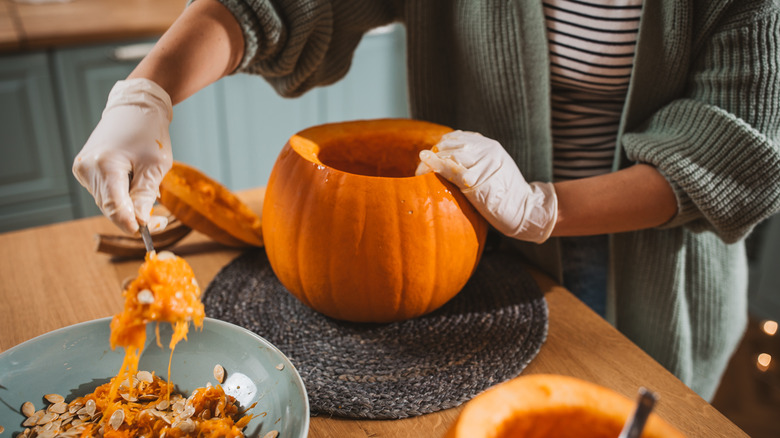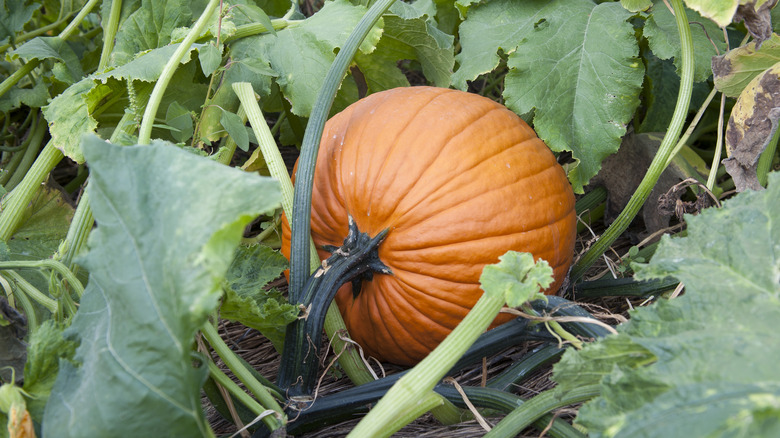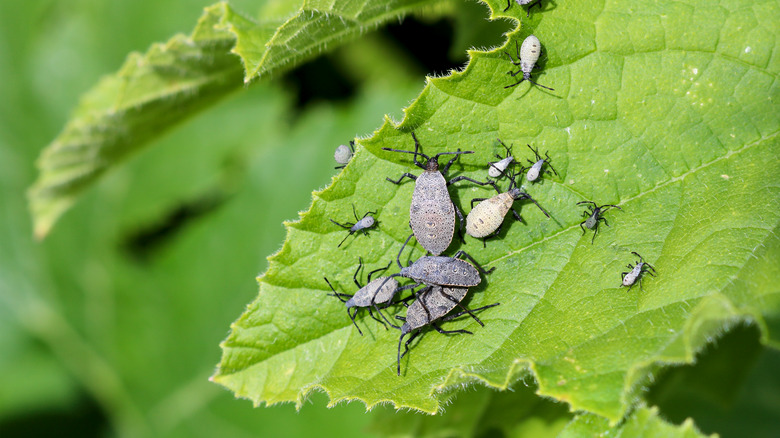Preserve And Save Pumpkin Seeds To Plant Next Year With A Window Screen Hack
There are more than 150 pumpkin varieties grown across the globe, each distinct in its size, shape, texture, and color. Pumpkins are also one of the oldest cultivated crops, with Indigenous North Americans growing this autumnal fruit for thousands of years before it became the Halloween symbol it is today. Whether the ultimate goal of your pumpkin patch is to decorate your home or to explore new culinary adventures, saving seeds for next season couldn't be easier. All you need is a humble window screen and a few good gourds.
Cut open a pumpkin and scoop out the flesh into a bowl. Rinse the seeds in the sink, while also separating them from the pulp, then drain everything in a strainer. Once the seeds are clean, spread them onto an old window screen and allow them to dry over the course of a few weeks. The ventilative nature of the screen allows for more air flow to help speed up the drying process. In order to encourage the evaporation of any moisture, you'll want to toss and turn over seeds every couple of days. You'll know the seeds are done when they look shiny and papery, and feel dry to the touch. From here you should store them in paper envelopes, rather than anything plastic, so as to avoid mold growth.
Proceed with caution when saving pumpkin seeds
If you grow zucchini, butternut, or any other variety of squash alongside pumpkins in your garden, then seed saving should only be done to grow new fruits with decor in mind — and not for consumption. Like all members of the Cucurbitaceae family, pumpkins and squash freely cross pollinate with one another, which can often result in zany and exciting hybrids the following season. But with those fun new shapes and colors comes the danger of something known as toxic squash syndrome.
Crossbred squash or compost pile volunteers run the risk of containing a higher concentration of cucurbitacin, a potentially harmful compound that occurs naturally in squash, but can make you very sick if consumed in large quantities. Symptoms are similar to food poisoning and can include cramping, stomach pain, and diarrhea that lasts for a few days. So, while wacky new crossbreeds are fun to look at, they shouldn't be eaten. To be safe, purchase squash seeds from a reputable source if you're planning to cook anything. Everything else can find a home in your autumnal display.
Why it's a good idea to burn pumpkin vines during fall cleanup
So you've carved your Jack-o'-lantern and saved your seeds, but now it's time to clean up all the pumpkin vines in the garden. If you've ever dealt with squash bugs and squash vine borers, you know the havoc they can wreak on plants, sucking the sap from leaves, tunneling through stems, and overall weakening the plant. To keep the pest population at bay from one year to the next, it's essential to clean up the vines, which is where squash bugs lay their eggs and where squash vine borers set their cocoons.
You could drop them onto the compost pile, but doing so comes with the risk that eggs and cocoons will over winter in the vines. That means that once your compost is ready to be spread throughout the garden, you'll also be distributing the bugs and inviting them to eat and reproduce for another season. Instead, skip the compost and burn those squash vines instead. Removing them from the garden will be your first line of defense, but then the high heat from the fire will also help to kill off any stowaways. Finally, tilling the area and rotating your vegetable crops for the following season can also help to keep the bugs at bay.


